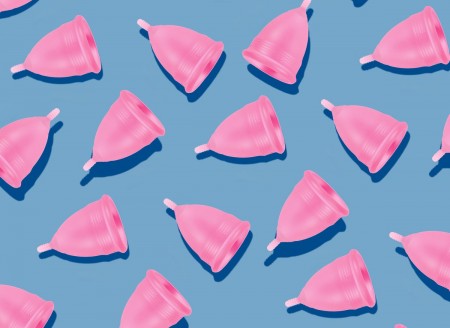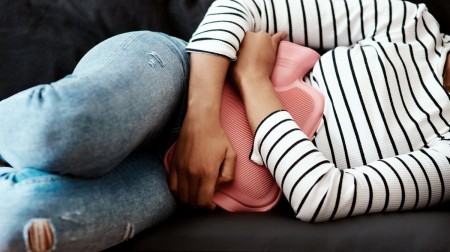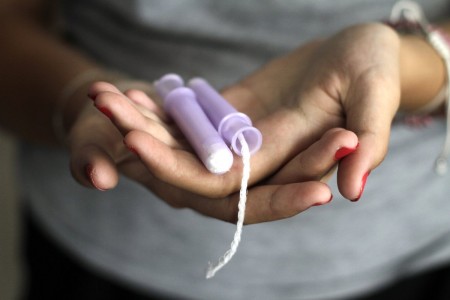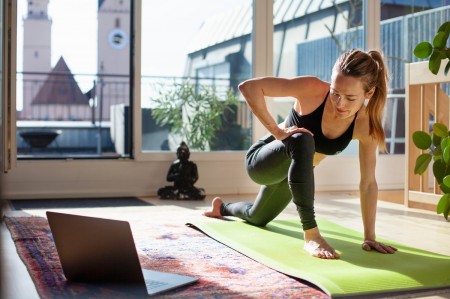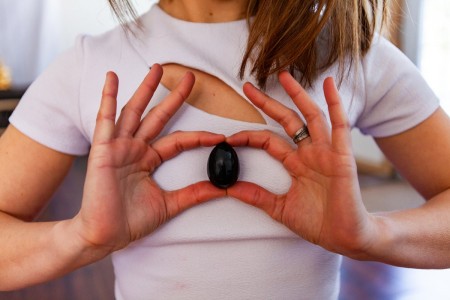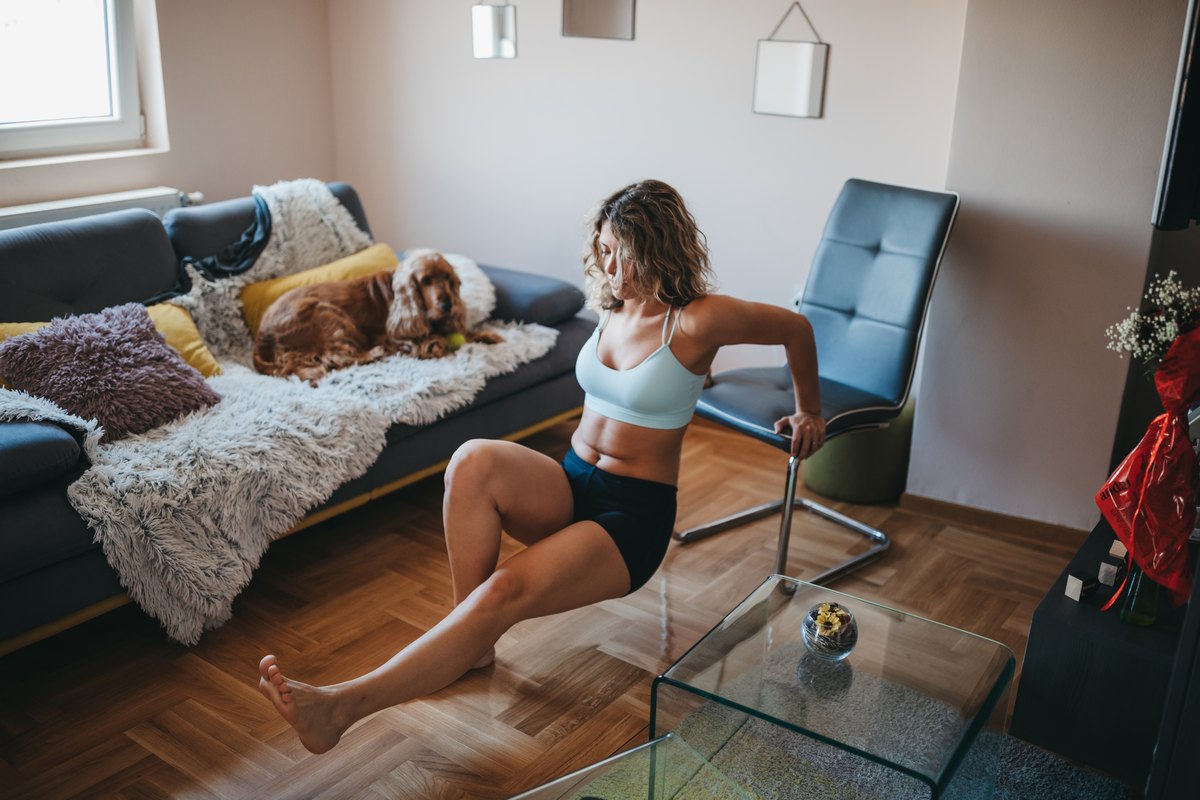
Advertisements
If you're curled up under the covers with period cramps and a bloated belly, lacing up your gym shoes is likely the last thing on your mind. We get it: A heavy flow can make you feel awful.
Video of the Day
But, if you're up to it, moving around might help ease period cramps and other menstruation woes.
Here, Allison K. Rodgers, MD, a board-certified ob-gyn, reproductive endocrinologist and director of education at the Fertility Centers of Illinois, explains how monthly bleeding can affect your workouts, how a strategic sweat session can slash period symptoms and what types of exercise are safe to do during that time of month (spoiler alert: all forms of movement are A-OK).
What Is the Menstrual Cycle, Anyway?
The menstrual cycle refers to the series of hormonal changes that happen within your body as it preps for the possible chance of pregnancy each month. The whole cycle — which may vary in length from 21 to 35 days — begins on the first day of your period (restarting when your next period begins) and consists of four phases, per the Cleveland Clinic:
- Menses phase (approximately day 1 to day 5): the uterus sheds its lining
- Follicular phase (approximately days 6 to 14): the uterine lining thickens and follicles in the ovaries grow, forming a mature egg
- Ovulation (approximately day 14 in a 28-day menstrual cycle): the ovary releases the egg
- Luteal phase (approximately days 15 to 28): the egg travels through the fallopian tubes to the uterus
How Your Body Changes During Your Period
Anyone with a uterus is familiar with Aunt Flo's less-than-desirable effects on your body. But here's what's actually going on inside you:
Your period occurs during the menses phase, the first part of your menstrual cycle. In this phase, your body sheds the lining of the uterus through your vagina (this is the blood you see in your undies) if you are not pregnant. Menses usually lasts between three to five days, but anywhere from two to seven days is considered normal, according to the Cleveland Clinic.
During this short period of time (pun intended), a lot is happening in your body hormonally.
"Your estrogen and progesterone are very low," Dr. Rodgers says. And this can contribute to the characteristic symptoms of menstruation, including:
- Bloating
- Cramping
- Mood swings
- Difficulty sleeping
- Food cravings
- Tenderness in the breasts
- Acne
Related Reading
The 6 Best Heating Pads for Cramps
How Does Your Period Affect Your Workouts?
Your energy levels — and motivation to hit the gym — might be pretty low during your period. But this is largely due to the dip in hormones, not blood loss.
For a normal period, the amount of bleeding shouldn't make you feel lightheaded or become anemic, Dr. Rodgers says. So, while you might feel a bit pooped on your period, it's still safe to exercise.
Advertisements
However, if your period lasts longer than seven days, your flow is more heavy than usual or you're bleeding enough to soak through more than one pad or tampon every hour or so, contact your doctor, as this may be a sign of something more serious, per the Mayo Clinic.
Benefits of Exercising During Your Period
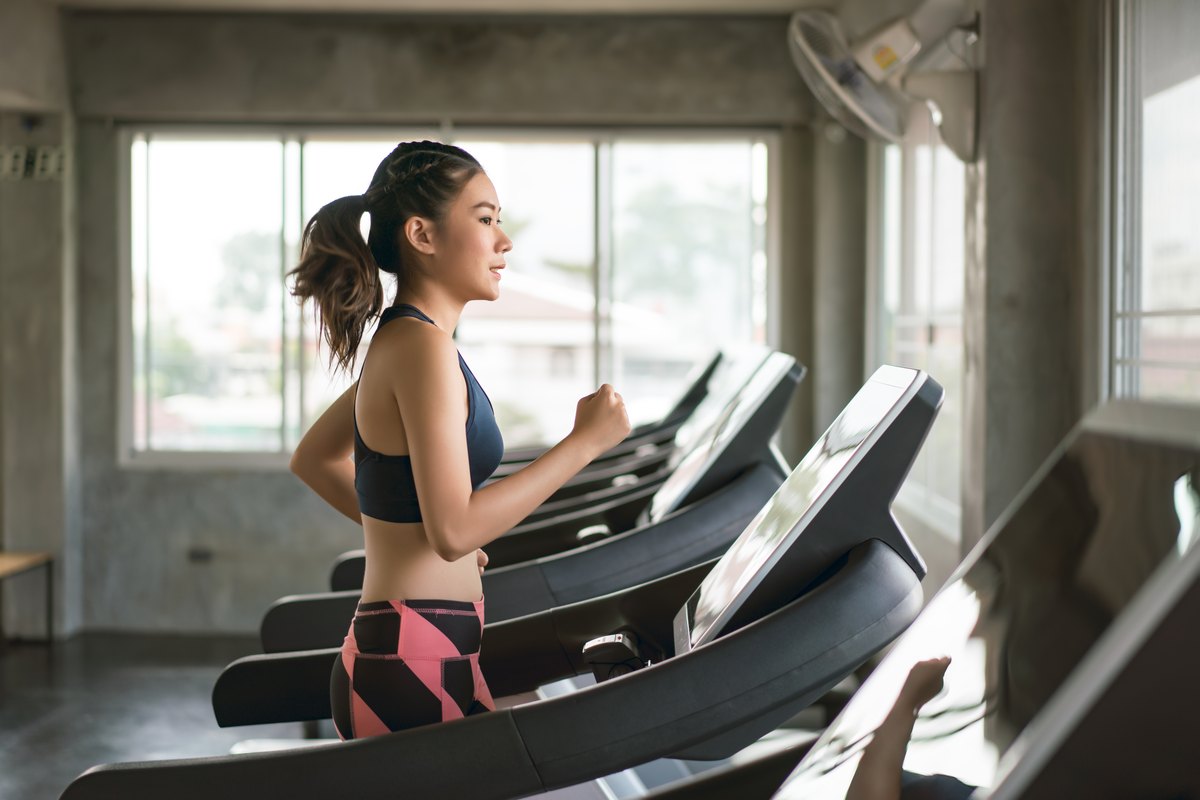
Advertisements
If you're feeling tired, bloated and crampy, a spirited sweat session might be just what the doctor ordered to decrease your period-related discomfort.
Indeed, Dr. Rodgers recommends doing a strenuous cardio workout. Raising your heart rate for a sustained period releases natural endorphins, which can help relieve period cramps and improve your mood, she explains.
Case in point: A September 2019 review in the Cochrane Database of Systematic Reviews concluded that regular exercise (regardless of intensity) helped reduce menstrual pain to a significant degree.
And if you simply can't muster enough oomph for high-energy exercise during your period, slow, gentle movements like stretching and yoga are amazing alternatives because they can help you feel more relaxed, Dr. Rodgers says.
In fact, studies show that doing yoga can help lower levels of inflammation and cortisol (a stress hormone) in the body, according to Harvard Health Publishing.
Plus, yoga can also temper painful period cramps. That's what one small February 2017 study in the Journal of Bodywork and Movement Therapies found. Compared to a control group (who didn't do any form of exercise), people who practiced yoga twice a week, for a half hour each day experienced a substantial improvement in period pain and overall quality of life within three months.
3 Tips for Exercising on Your Period
All types of exercise are OK to do during menstruation, but here are a few general guidelines to consider when planning your period-week workouts:
1. Do Whatever Feels Good
"I recommend choosing a type of movement that you enjoy," Dr. Rodgers says.
Again, you're looking to leverage those feel-good endorphins. Any activity — from gentle walking to a HIIT class — can help your brain produce these positive chemicals.
2. Listen to Your Body
Thanks to the hormonal shifts, your sleep may suffer during your period. So, if you're feeling fatigued, you may need to shorten your workouts or take a rest day, Dr. Rodgers says.
3. Modify Your Menstrual Products
"On very heavy days, you may need to change your period products before your workout," Dr. Rodgers says. For instance: "Consider using tampons or menstrual cups to avoid chafing of a pad against your skin," she says.
Related Reading
The 2 Worst Workouts if You're Feeling Bloated and 2 to Try Instead

